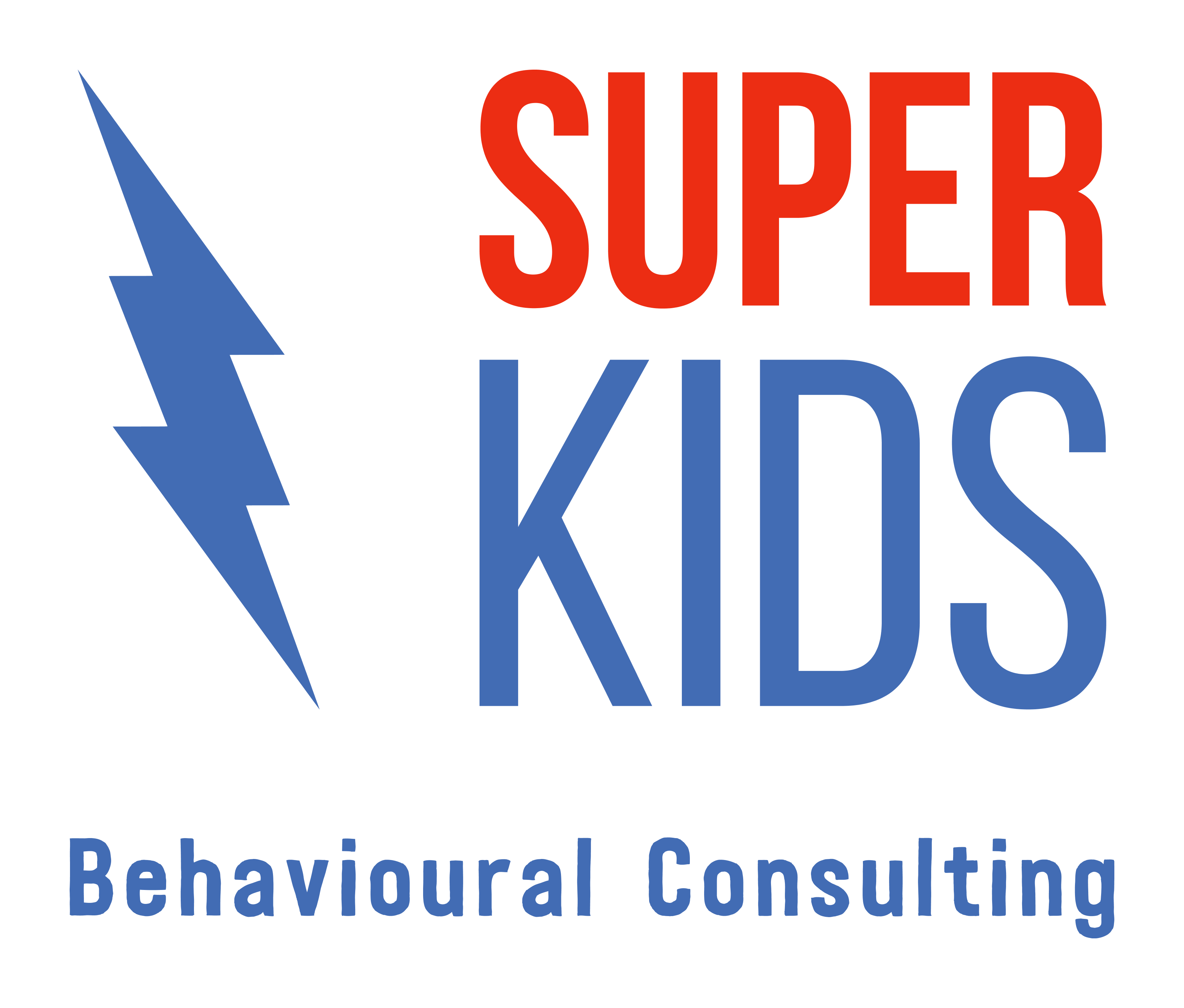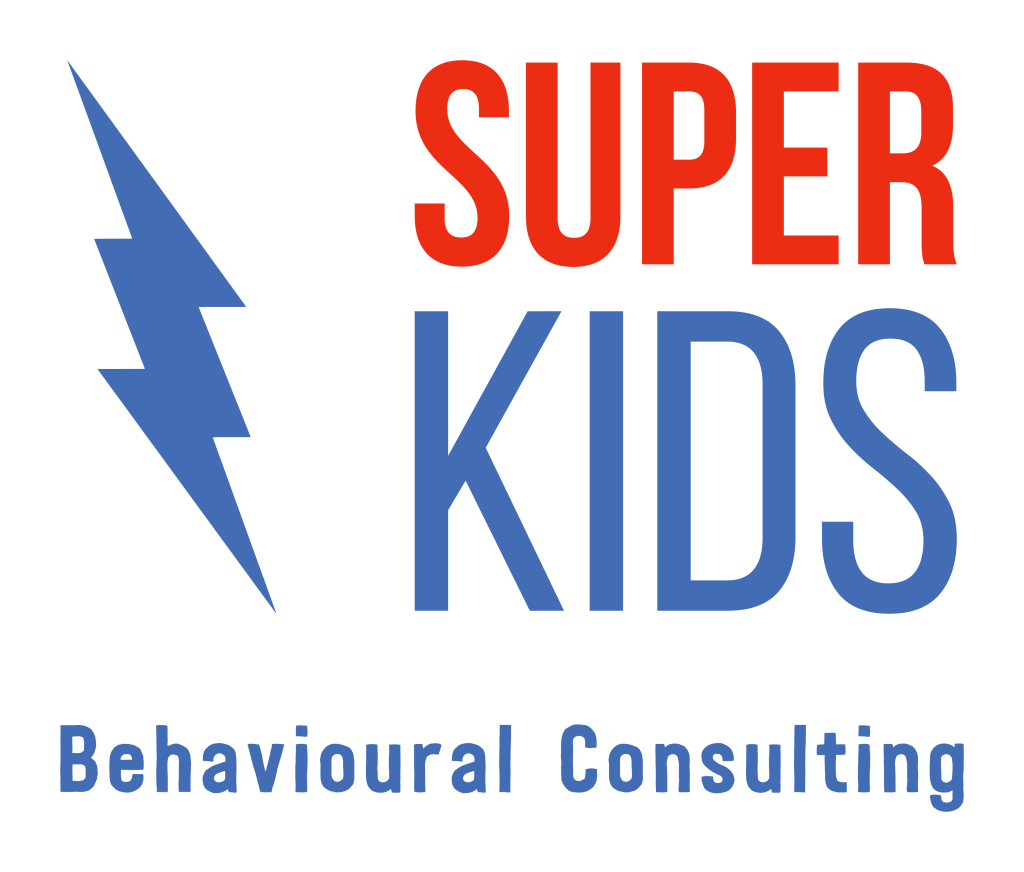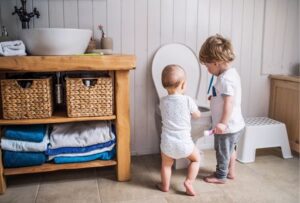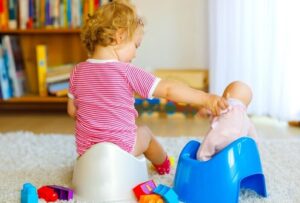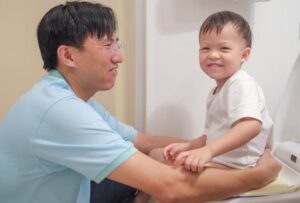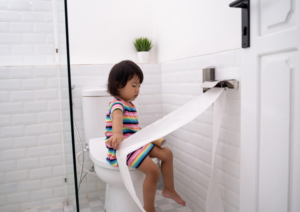The Ultimate Guide to Successful Toilet Training: Expert Tips from a Highly Sought-after Toilet Training Consultant

Renee Collins
Clinical Director
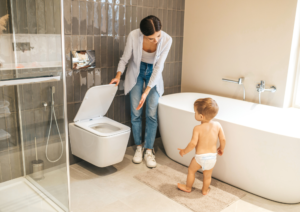
Are you dreading the never-ending battle of toilet training or are unsure of how to even get started? Toilet training can be a challenging milestone for both children and parents. That’s why we’ve enlisted the guidance of our Super Kids seasoned toilet training consultant, who has helped countless families achieve toilet training success. With years of experience and a deep understanding of child development, our Clinical Director, Renee Collins, shares invaluable insights and The Ultimate Guide to Successful Toilet Training: Expert Tips from a Highly Sought-after Toilet Training Consultant to help guide you through this daunting process.
When to start toilet training
Toilet training is a significant milestone in a child’s life, but the question often arises: when is the right time to start? While there is no one-size-fits-all answer, there are some signs that indicate your child may be ready to begin their toilet training journey. Developmental readiness, rather than chronological age, should be the determining factor to decide when to begin a toilet training program. These are skills that your child will benefit from learning and mastering before you commence toilet training. Please note that these will not be appropriate for all children and may only be a consideration or ongoing goal but toilet training can still begin as long as there is co-operation.
The first sign to look out for is an increased interest in the bathroom habits of others. If your child starts showing curiosity about what happens when someone goes to the bathroom or imitates actions related to toileting, it may be a sign that they are ready to start toilet training.
Another indicator is improved bladder and bowel control. If your child can stay dry for longer periods during the day or wake up from naps with a dry nappy consistently, it shows that they have gained control over their bodily functions. They should be able to hold for at least two hours at a time. If not, then please discuss this with your child’s general practitioner or medical team.
Lastly, physical and cognitive development play a crucial role in determining readiness. If your child is able to walk steadily and independently, have the dexterity to pull their pants up and down, and understand simple instructions, these are all positive signs. Your child’s ability and willingness to follow simple instructions is an important indicator of readiness. They should be able to understand and follow directions like “sit on the potty” or “flush the toilet.” This cognitive development is vital for successful toilet training as it enables them to understand the process and actively participate happily.
Remember, every child is unique, and readiness varies from one child to another. It’s important to observe your child’s behavior, take note of any signs of readiness, and trust your instincts as a parent. Popular theory suggests that initiation of self-dressing or undressing, interest in the potty are a must before beginning toilet training. This may be true for some children, but not all, particularly those with developmental delays and disabilities. Within the behavioral research, readiness skills include simple gross motor actions (i.e. ability to walk), compliance with parental demands and some bladder continence is sufficient to begin toilet training. Some children may also never demonstrate all of the above signs of readiness but this does not mean that you shouldn’t start or consider them capable of being toilet trained!
At Super Kids, we usually suggest that the most important skills to consider are:
- Have the ability to sit appropriately on the toilet for at least three minutes
- Have a bladder capacity that allows them to hold and remain dry for approximately 1-2 hours between urinations
- Follow instructions and co-operate when asked, such as “sit on the toilet” and “go to bathroom”
- Have minimal interferring problem behaviour (eg: aggression, self-injury)
Additional skills that are helpful but not always necessary:
- Have a understanding of the relationship between doing something good and getting a reward
- Can complete a few basic self-care skills (such as lowering their own pants)
If they are missing any of these skills, you may consider teaching these skills to your child before commencing a toilet program to increase the likelihood of their success and make it a more enjoyable experience for everyone involved! A behavioural intervention program should show quick results.
Creating a toilet training plan
A well-thought-out toilet training plan is key to ensuring a smooth and successful journey. By creating a structured approach, you can set clear expectations, establish routines, and provide consistency for your child.
Start by choosing the right equipment and bathroom set up. Whether you opt for a potty chair or a child-sized toilet seat and step, ensure that it is comfortable, stable, and easily accessible for your child. We do love and often recommend a family toilet seat. Additionally, consider involving your child in the selection process to make them feel more engaged and excited about using it.
Next, establish a consistent routine for toilet training. Set specific times throughout the day when you will encourage your child to sit on the potty or toilet. This routine will help them develop a sense of predictability and familiarity, making the process less overwhelming.
Introduce your child to the concept of using the toilet or potty by explaining its purpose in simple and age-appropriate language. Use books, videos, or even role-play to make it a fun and interactive experience. Encourage them to sit on the potty or toilet fully clothed initially, allowing them to get used to the idea without any pressure.
As your child becomes more comfortable, gradually transition to sitting on the potty or toilet without a nappy or pull-up. This step may take some time, so be patient and provide plenty of positive reinforcement and encouragement. Celebrate even the smallest successes, such as sitting on the potty or trying to use it, to motivate your child and build their confidence.
It’s also important to teach your child proper hygiene practices from the beginning. Show them how to wipe themselves, flush the toilet, and wash their hands thoroughly. By instilling good hygiene habits early on, you are setting the foundation for a lifetime of healthy practices.
Remember, every child is different, and it’s essential to tailor your toilet training plan to their unique needs and personality. Be flexible and adapt the plan as necessary, keeping in mind that accidents and setbacks are a normal part of the process.
Common toilet training challenges and how to overcome them
Toilet training can be a challenging process, and setbacks are common. It is important to approach setbacks with patience and understanding, recognizing that each child progresses at their own pace. Here are some common challenges that may arise during toilet training, along with strategies to address them:
- Resistance or refusal: If your child resists or refuses to use the toilet, try to identify any underlying reasons for their reluctance. It could be related to sensory sensitivities, fear, or a lack of understanding. Address these concerns by gradually introducing them to the toilet, using visual supports, or providing additional reassurance and encouragement.
- Accidents: Accidents are a natural part of the toilet training process. Instead of becoming frustrated or punitive, offer support and understanding. Use this as an opportunity for learning more about your child’s toilet habits. Assist your child in cleaning up and emphasize that accidents happen, reinforcing the importance of trying again next time.
- Toileting regression: It is not uncommon for a child to experience temporary regression in their toilet training progress. This can be triggered by changes in routine, stress, or other factors. Maintain consistency and patience during this time, and provide additional support and reassurance to help your child regain their progress.
- Transitioning to public restrooms: Moving from using the toilet at home to public restrooms or their educational setting can be a significant transition for children, particularly those with developmental delays such as Autism or Global Developmental Delay. Prepare your child for this change by practicing using public restrooms in a familiar and less crowded environment, such as a family restroom or a restroom at a local park before taking them into busy and loud bathrooms such as in the shopping centre.
Remember, toilet training is a journey, and setbacks are just part of the process. We do hope that this Ultimate Guide to Successful Toilet Training gives you a solid starting place and actionable things you can begin immediately. By approaching challenges with empathy and flexibility, you can help your child overcome obstacles and continue progressing towards independence. If you are still struggling with teaching toilet training or another related bathroom behaviour to your Autistic child, such as washing their hands, wiping their bottom or standing at a urinal to wee, then you may want to consider a quick consultation with one of our toilet training experts that you can book here or contact [email protected] for more information.
Super Kids acknowledges each individual’s personal preference to use identity-first or person-first language to describe themselves or their loved one. We interchangeably use both language conventions and therefore refer to both Autistic children and children with Autism.
